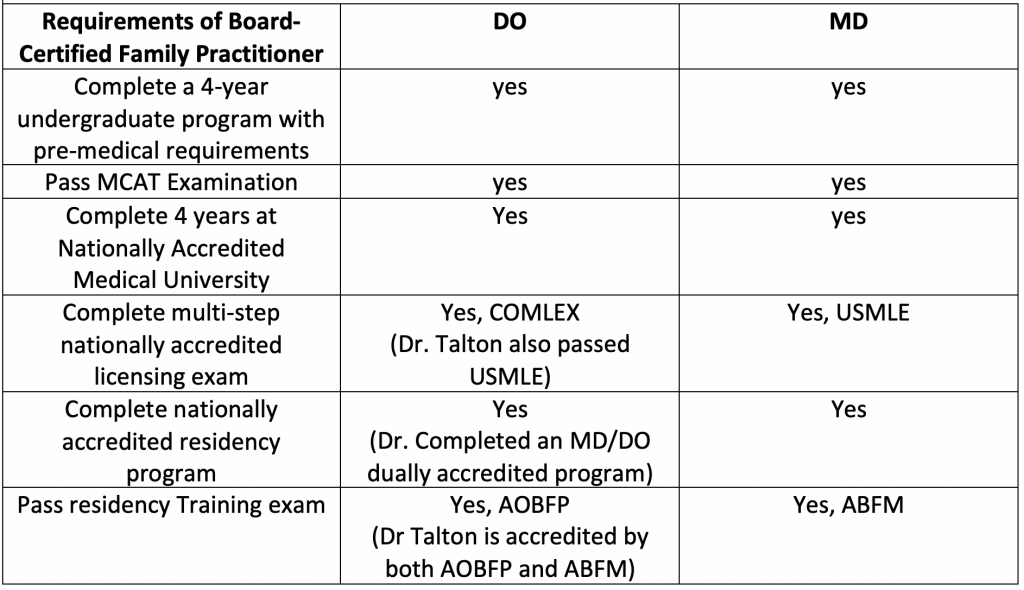Many of my patients ask, “What is a DO?”
My medical degree is from Lake Erie College of Osteopathic Medicine, which makes me a D.O. not an M.D. When people take notice of my degree, they often notice that many long-standing community physicians in the area, of all specialties, are also D.O.s.
The main difference between a D.O. and an M.D. is the medical school training. D.O. programs include an area of study known as Osteopathic Manipulative Medicine. This is a hands-on manipulation of the body to realign the body for optimum function. It is a part of training that occurs throughout the four years of Osteopathic medical school. It is a safe and billable form of medical therapy recognized by medical societies and insurance companies alike. Also, the American Osteopathic Association, as well as osteopathic medical schools universally endorse a focus on “whole-person approach to help prevent injury and illness.”

MD and DO Comparison Chart
Osteopathic Medicine was founded in the early 1900s by an M.D.- civil war surgeon Andrew Taylor Still in Kansas out of a belief that physical manipulation of bones and muscles allows optimum nerve function, which allows the body to heal itself. While the general experience of osteopathic medical school is nearly identical to that of allopathic, or M.D., counterparts this day and age, the overlying philosophy to focus on disease prevention and wellness with a whole-person approach is still emphasized.
Some D.O. physicians practice manipulative medicine, Dr. Talton does not. While it is unlikely that you will notice a difference in her practice from her M.D. counterparts, there are many patients who state that they prefer D.O.s as their physicians because they are able to perceive a difference in a whole-minded approach to the patient.


